This is a guest post by HuzThatWriter.
On June 5th I had the chance to visit Star Wars: Galaxy’s Edge. First on my list was a stop at Savi’s Workshop.
Who is Savi, you ask? Savi is a friend of Lor San Tekka and is a fellow member of the Church of the Force. I think. What do you mean who’s Lor San Tekka? That old guy Kylo Ren killed at the beginning of The Force Awakens? The Three-Eyed Raven? Yeah, that guy. It doesn’t matter. You don’t see him anyways. You do, however, interact with his followers, the mysterious Gatherers who will guide you in the ancient ritual of lightsaber building.
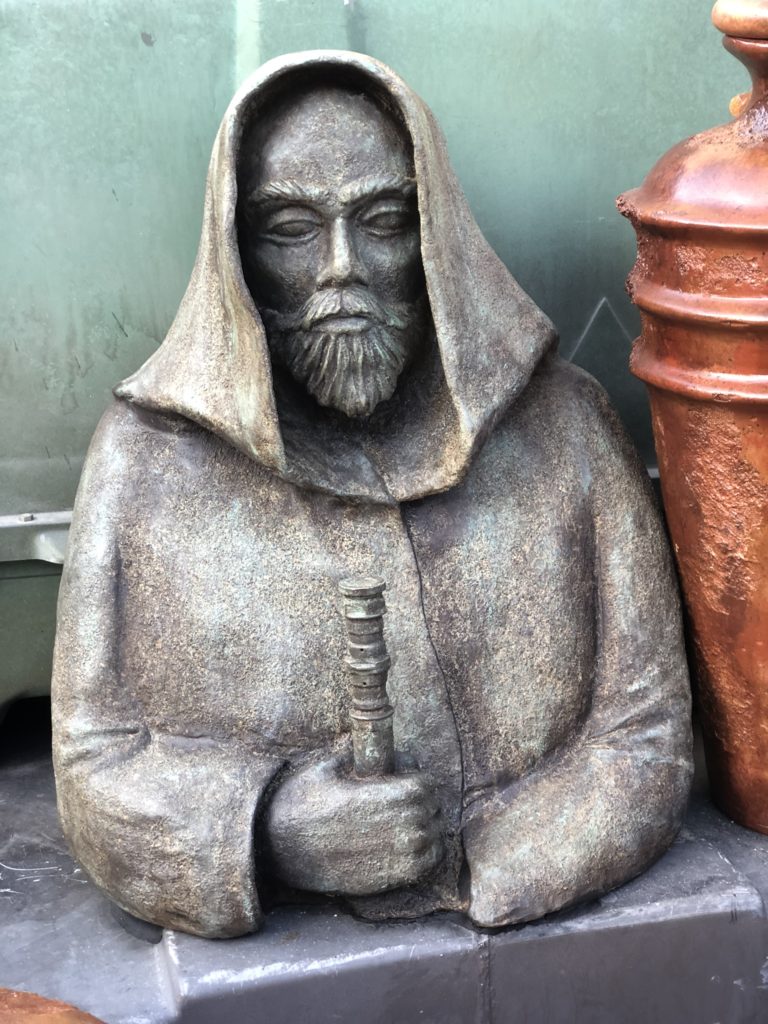
I walked swiftly asking directions towards “scrap metal”. Don’t say “lightsaber,” for the First Order is in town and such talk is frowned upon. The Gatherers take this very seriously. Everyone in the land is in character. And so you wait in line in an amazingly decorated scrapyard to pay for your scrap metal.
While in line to pay, some of the gatherers will show you cards with examples of four basic styles of lightsaber.
Peace and Justice: Visually these are the most like the sabers carried by many of the stereotypical Jedi during the era of the Republic in the prequel Trilogy. Obi-Wan and Anakin have similarly styled weapons.
Power and Control: This style evokes the blades carried by the bad guys. The aggressive styling and the red accents are reminiscent of Darth Vader and Darth Sidious.
Elemental Nature: Made from natural materials like aged leather, intricately carved bone, wood paneling, and even a rancor tooth. The materials symbolize the Force’s connection with nature.
Protection and defense: My personal favorite and the style I elected to construct. These are ancient unearthed pieces from the time of the Old Republic. The components are almost ceremonial in nature, some of the segments even containing writing from the Sacred Jedi Texts.
After you pay your $199.99 plus tax you must choose one of the four styles of lightsabers. You are given a card, a cloisonné pin, and a return time. You are instructed to wear your pin in a visible location (the design is different based on what style you chose) and to act dumb if the First Order asks you about it.
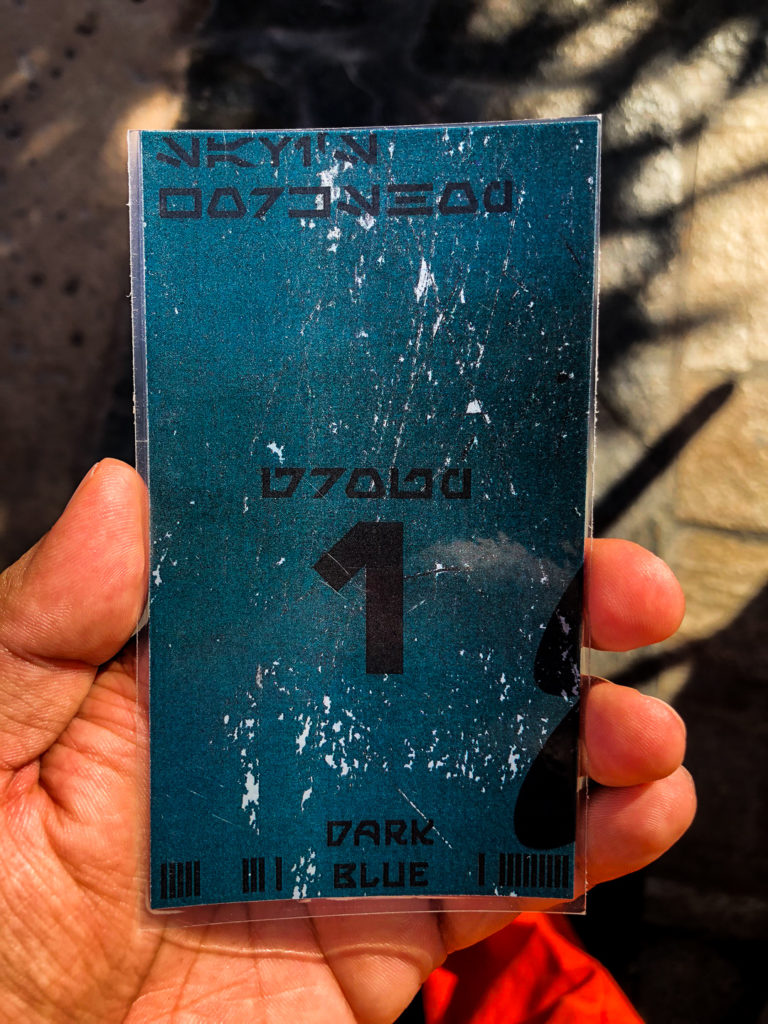
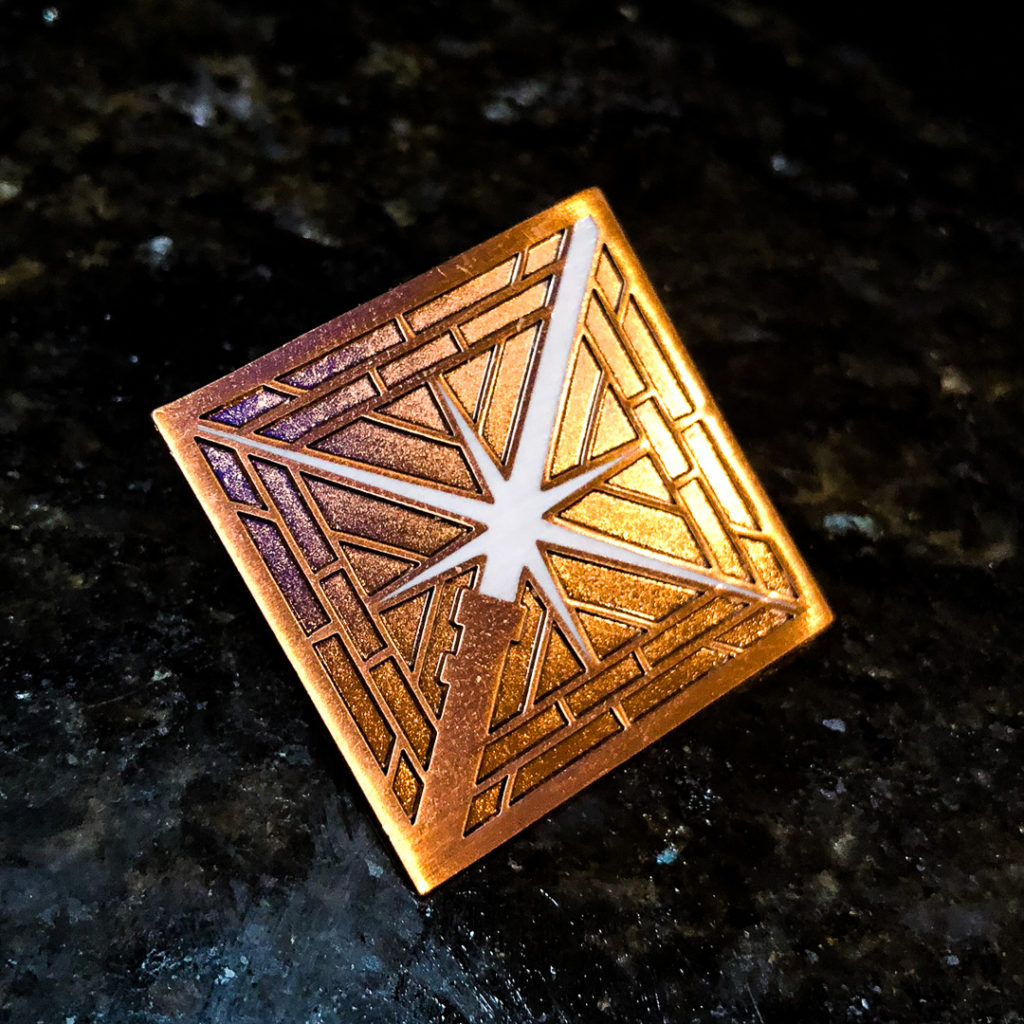
As I was close to the front of the line for my particular reservation period, I had about 20 minutes to wander the land. When I returned at the appointed time, I was led to a waiting area.
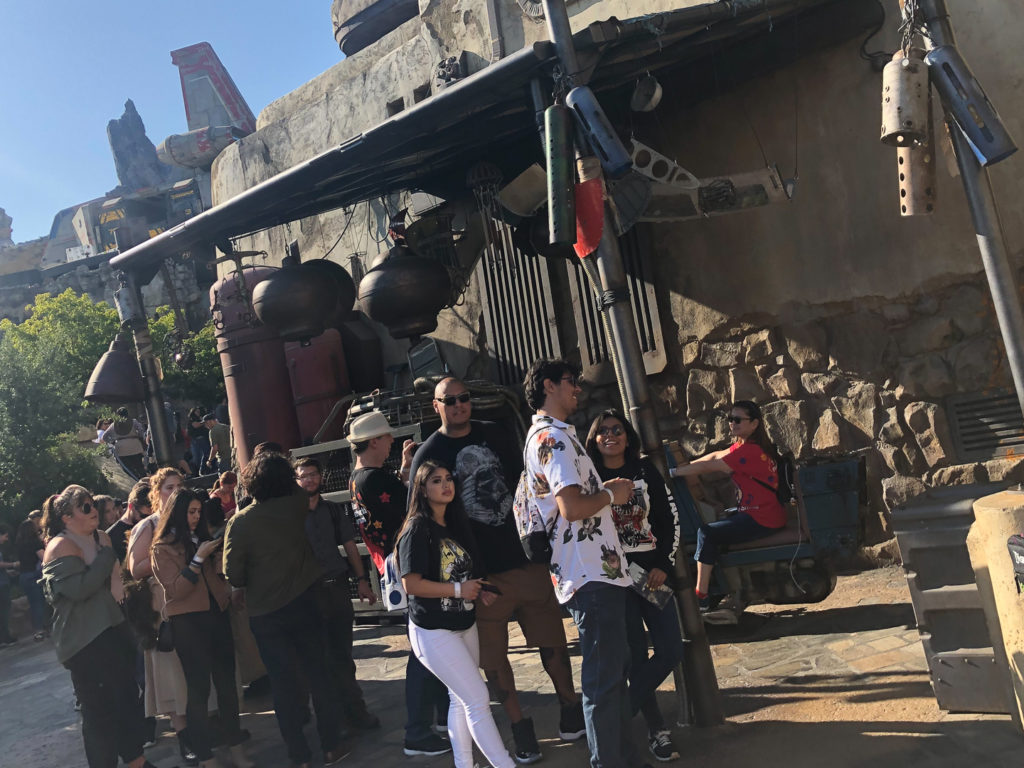
All the while you are warned that the First Order could show up at any time. And they do. It wasn’t long before Kylo Ren and some First Order Troopers swung by on “routine patrol” for some casual interrogation.
https://www.instagram.com/p/ByWRtdTh_8v/
After assuring them that we were simple scrap traders they moved on to other victims. Following the short interrogation by troopers we were ushered into the actual workshop. This is where the experience went from fun roleplay to absolutely magical.
Spoiler warning for those who would like to go into this without any prior knowledge.
You and a small group of other builders and guests are led into a small room assigned building stations. As with the rest of Galaxy’s Edge, the details in the show room are utterly immersive. It really does look like something a group of Force adherent scavengers would use as a secret meeting place.
The Gatherers give you a short introduction to lightsabers and their connection to the Jedi. They talk about how the color of the lightsaber is dependent on the color of the Kyber crystal used inside the saber. The four basic colors are blue, green, red, and purple. Along with some simple but effective lighting effects, Savi’s Gatherers tell you about the legendary Jedi that have possessed each color. You are told to close your eyes to feel which crystal calls to you.
The Gatherers go to each builder in turn with a holding unit containing glowing crystals from which you can choose. I went with purple.
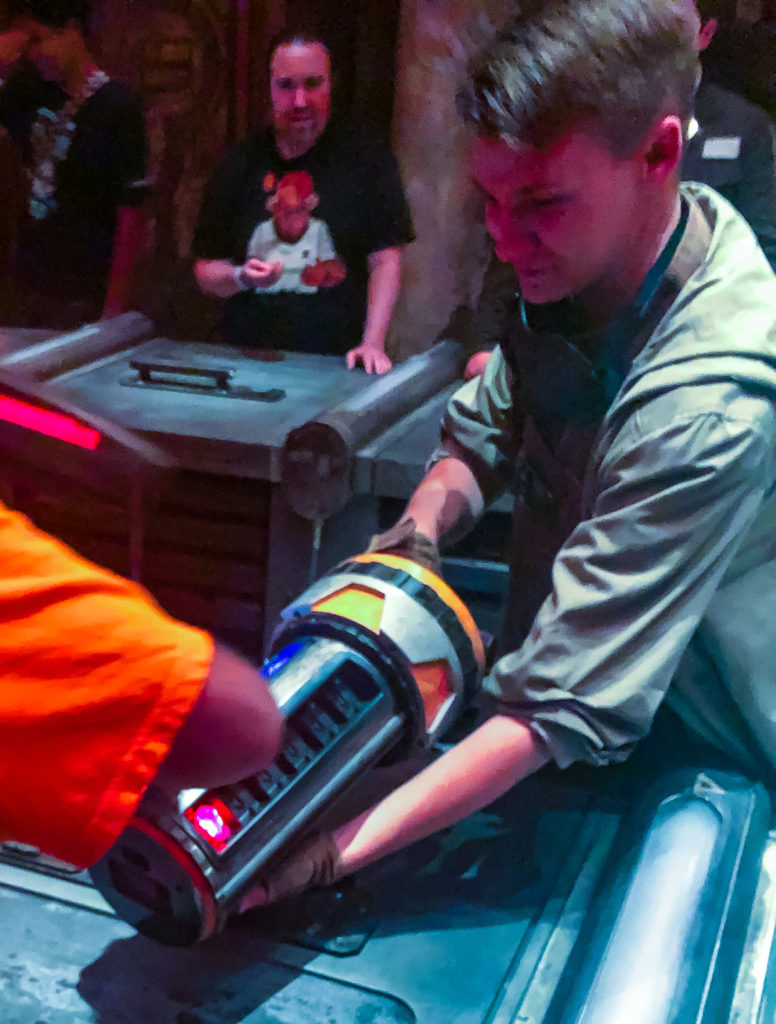
After crystal selections, the Gatherers note the pin that you’re wearing and bring you a tray full of lightsaber parts matching your chosen style. I went with the Protection and Defense style (hilt materials bear mysterious motifs and inscriptions that reconnect users with the ancient wellspring of the Force) because of my deep, almost obsessive, interest in all things regarding Force lore and the ancient origins of the Jedi Order and other Force wielders.
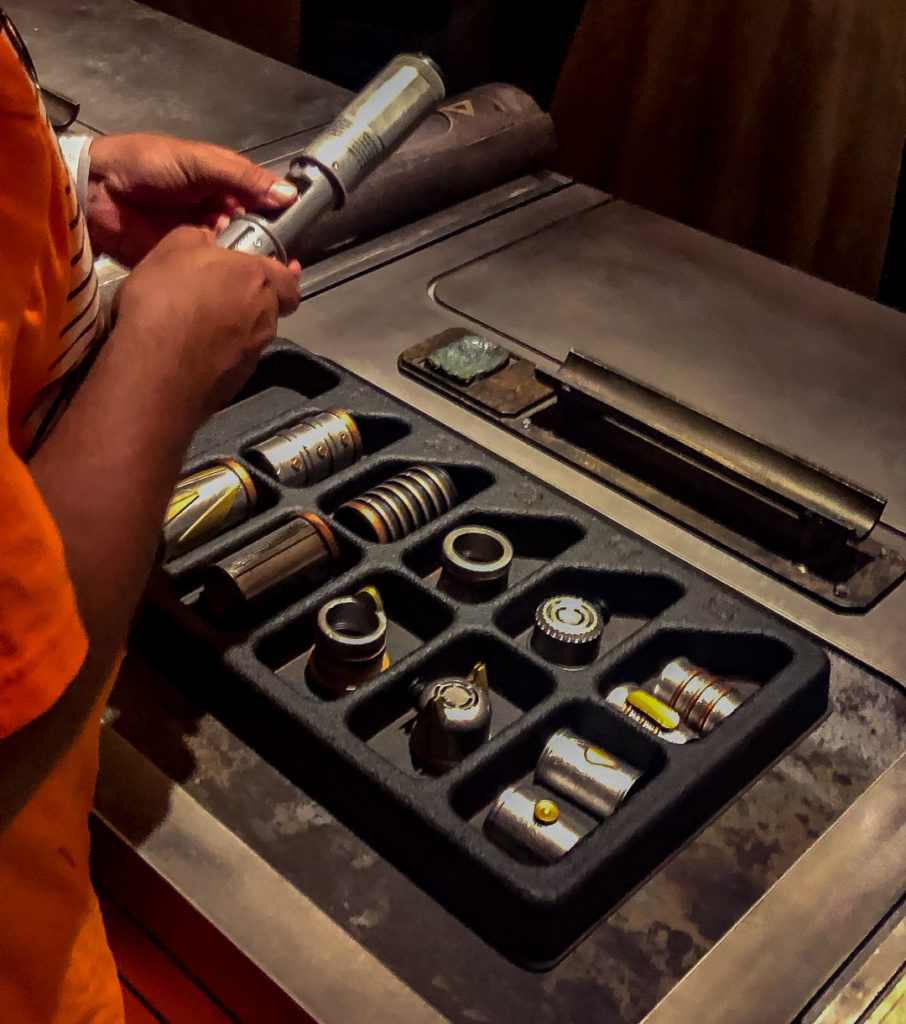
You are given several minutes to select your parts and construct your saber. Essentially you are given a lightsaber core which is the same for everyone. There are two options to choose from for the activation plates, emitter, and end cap. There are four choices for the middle sections of which you select two. At first this didn’t seem like much variety, but I noticed that there were four of us on one side of the room that had chosen the same style and not a single one of us made a hilt that looked exactly the same.
Throughout the process the Gatherers guide and assist you. At no time did I feel like I was rushed. Once everyone in the room has completed their hilts the Gatherers retrieve them for “activation,” telling everyone to step back as they attach them to a slot on the counter.
In what is the highlight moment of the entire experience, everyone activates their lightsabers and fourteen blades are revealed at the same time. In awe of the blade that wasn’t previously there, everyone almost hypnotically raises their lightsabers illuminating the darkened room as we receive a message of congratulations and encouragement from one of our favorite Jedi.
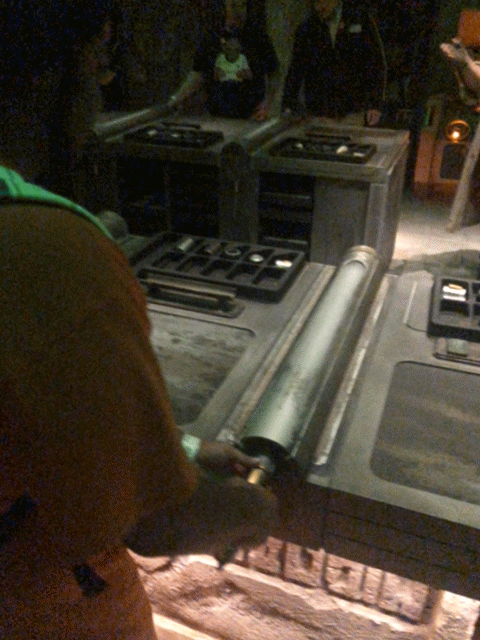
End of spoilers.
As a show experience, the whole process is magical. But what about the product? What do you actually get for your $200+ besides a fancy (if admittedly awesome) light show?
Included with your purchase is the aforementioned pin, the lightsaber hilt, a blade, a crystal, and a padded carrying case for the whole lot. When you look at the individual cost of the items (around $50 for a blade, $13 for each crystal, $50 for a carrying case, and $15 for a comparable pin) your lightsaber hilt comes in at around $100. For people that are into high end lightsaber replicas, this is a steal.
Beyond that, the quality of the hilt is amazing. It’s solid and heavy die cast metal. Whenever I let someone hold my lightsaber (you have a dirty mind) they are always astonished by the weight (stop it). Seriously though, this is a heavy display piece. Add to that the fact that you can change the color of the blade simply by swapping out a crystal, something that no other Legacy, Master Replicas, or Force FX lightsaber can do, this is the best $200 lightsaber you can buy, if you are inclined to spend that kind of money on a lightsaber. Additionally, the crystals are also compatible with the Jedi and Sith holocron collectibles they sell.
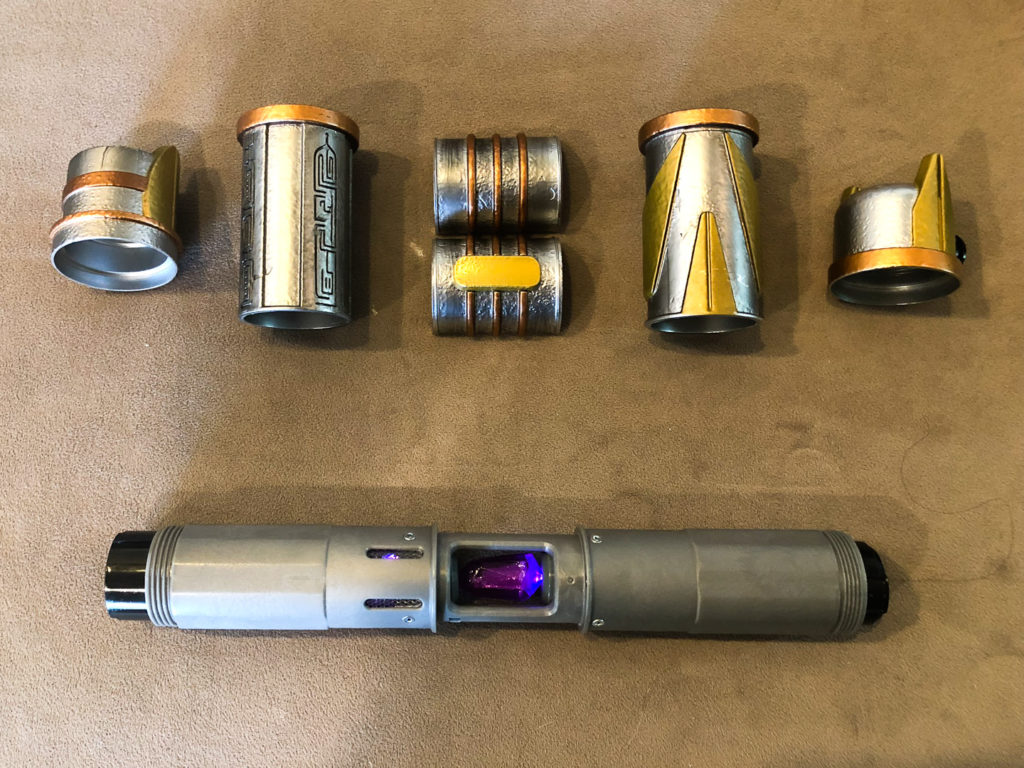
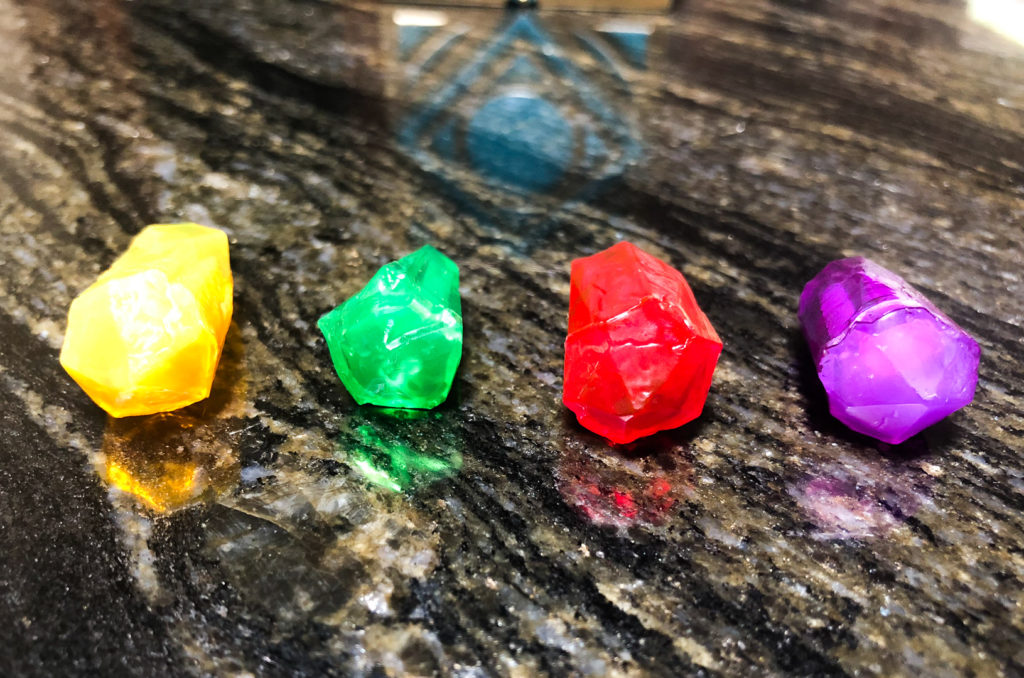
So what’s not so great about it? Compared to other high-end lightsabers, the motion and hit detection is poor. The latency between movements and sounds is very noticeable and frankly worse than any other lightsaber I’ve owned, including toys. Another con is the difficulty in inserting different crystals. They sit firmly once you get them inserted but, in my opinion, they made a poor design choice in putting the spring-loaded portion of the crystal housing at the top end of the hilt. As such, you must push up first and insert the bottom of the crystal second. It would be far more intuitive to push down and align the top end second.
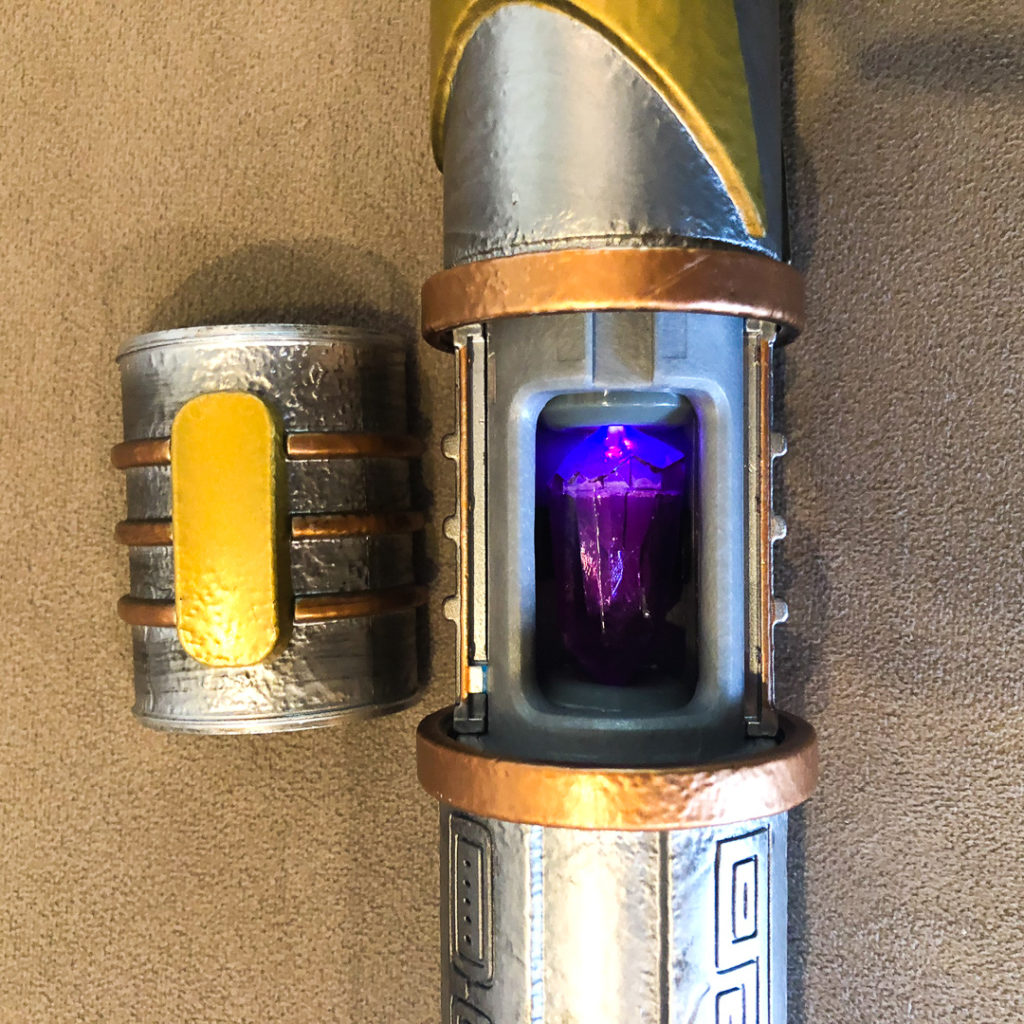
The final negative of the saber is the alignment of the various interchangeable pieces. A few of the designs have elements that look good when lined up properly. However, the threading on the portions is such that many of the pieces don’t line up aesthetically to match contiguous patterns. This is particularly a problem on the Elemental Nature sabers, because it has filigree designs that look great when aligned properly. It’s also a bit of a problem on the Protection and Defense sabers, though not as much. This is hardly an issue for the other two styles as the pieces are mostly symmetrical.
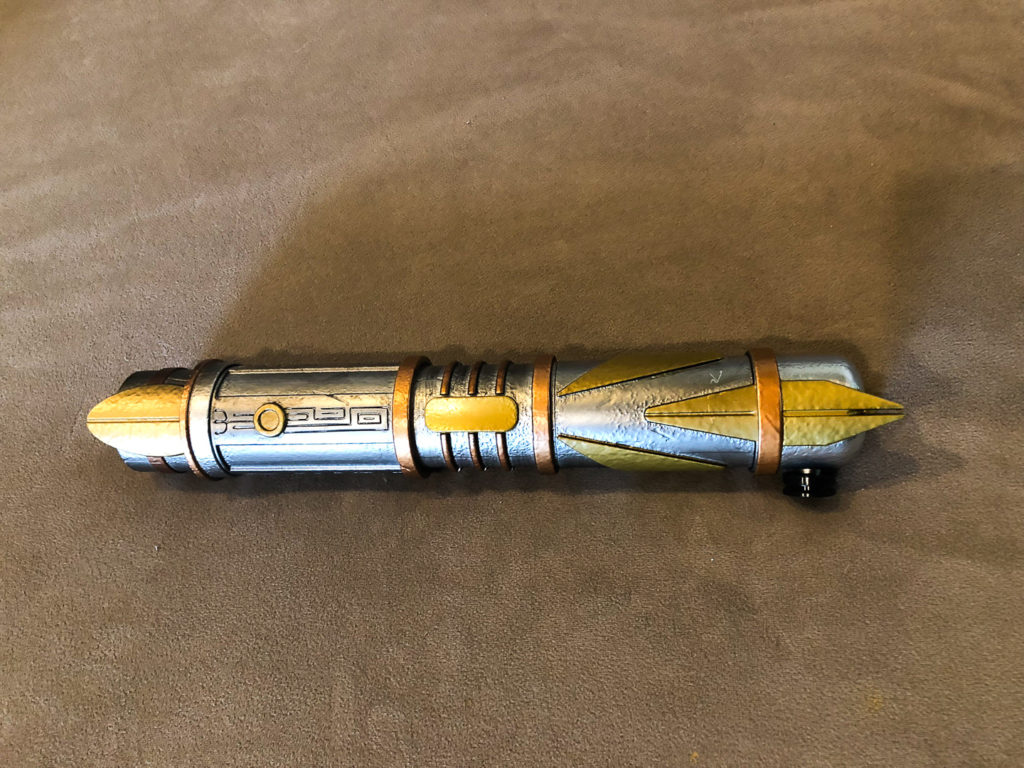
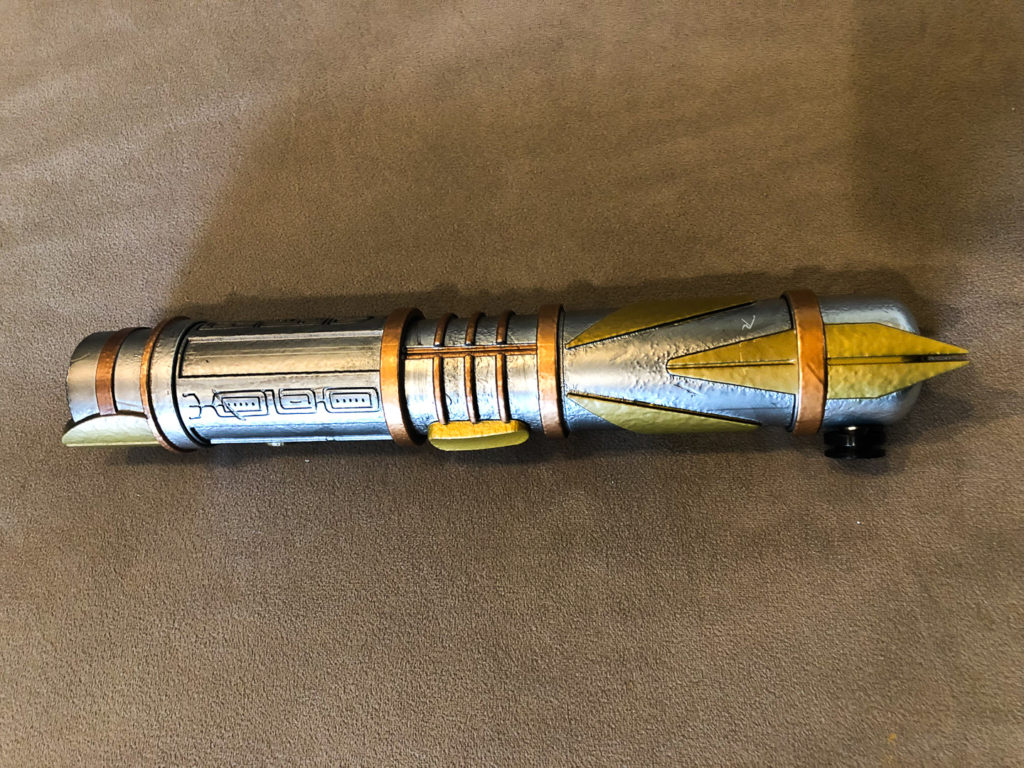
Overall, I feel like if you’re in the market for a high-quality lightsaber and are intrigued by the idea of having something more unique than a replica of something we’ve already seen, then I’d say this is 100% worth the price. When compared to the $150 to $200 cost of the Legacy hilts (which don’t come with blades included) I feel like $200 plus tax is a steal.
But I get that this is neither a priority nor an appeal for everyone. If you’re not interested in lightsabers of this quality, then what are you doing here? I kid of course. There are plenty of less expensive options, though those are more toy quality than display pieces. However, even if spending that much money for this isn’t really your bag, I highly recommend going with someone who IS building a saber, just to see the show.
If you’re planning on buying an expensive lightsaber, and don’t want it to be something you’ve seen in the movies, then this is saber for you.